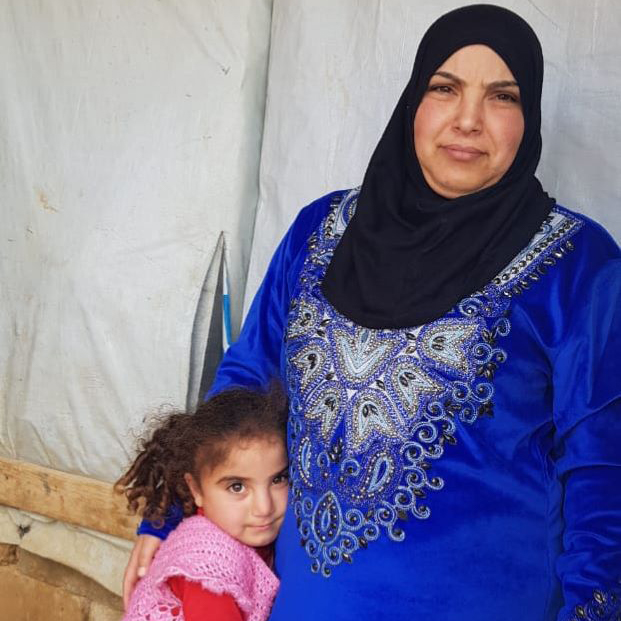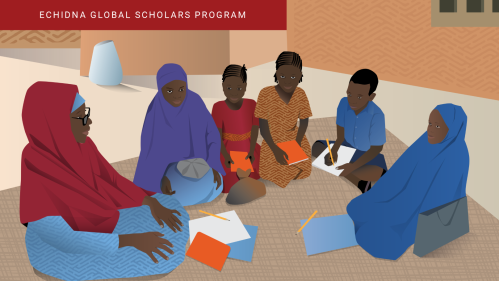The International Rescue Committee (IRC) has teamed up with Sesame Workshop to deliver the largest early childhood intervention in the history of humanitarian response. This is possible because of a $100 million grant from the MacArthur Foundation in 2017, and as of December 2018 additional support from the LEGO Foundation, recognizing that transformational change for children in crisis requires large-scale investments over longer timeframes.
Over five years, through Ahlan Simsim—which means “Welcome Sesame” in Arabic—the IRC will deliver critical early childhood development (ECD) programs in the Syrian response region to refugee and host community families. These programs will target both children and their caregivers and aim to improve the cognitive and social-emotional skills of more than a million children.
Sesame Workshop is also developing a new, locally produced, Arabic-language version of “Sesame Street” designed to support children by strengthening their social-emotional growth. The show, expected to air in early fall, will reach millions of children across the region.
Why ECD matters for displaced and refugee children
“We came to Lebanon to protect our children,” says Madiha*, mother of six who fled Syria for northern Lebanon in 2012. “Our house was destroyed. Life felt like a bad dream. We came with nothing.”
They say a single death is a tragedy; a million deaths is a statistic. The risk on World Refugee Day is that we become anesthetized by the sheer magnitude of the displacement crisis. Today, more than 70 million people are forcibly displaced from their homes because of either conflict or natural disaster—that’s one person every two seconds.
In Syria alone, four million children—half of all children living there—have been born since the conflict began in 2011, leaving a generation of children at great risk. Children like Mirna*, Madiha’s four-year-old daughter, and the almost 31 million children worldwide who experience crisis and displacement at this young age, are particularly vulnerable to the long-lasting effects that prolonged stress has on the developing brain.
Fortunately, quality ECD programs, which deliver vital early learning and responsive caregiving along with attention to health, nutrition, safety, and security, have remarkable ability to reverse many of the harmful effects of conflict and displacement. Critical interventions have important implications not only for individuals and families but for societies as a whole, and linkages between quality ECD programs to violence prevention and peace and security exist.
However, despite the magnitude of the Syrian crisis and the critical importance of investing in the early years of a child’s life, ECD programs are often not prioritized in humanitarian responses. Where they are, there is a dearth of trained ECD practitioners and scarce resources to support them. Only 2 percent of humanitarian assistance goes to education, and just a fraction of that benefits the youngest children like Mirna.
The push for systemwide change, replication, and scalability
In addition to the direct services and mass media components delivered by the IRC and Sesame Workshop, Ahlan Simsim has the potential to help shift the humanitarian system to focus more on evidence-based educational opportunities for children. In collaboration with NYU’s Global TIES for Children, this includes building global knowledge and capacity around large-scale implementation and measurement of ECD programs, an issue that has been severely under-researched and documented.
As Ahlan Simsim’s program models are designed and tested to ensure replication and scalability, those involved would do well to heed research by the Center for Universal Education (CUE) at Brookings and other seminal literature. Those findings point to the following shifts that those involved in this comprehensive ECD response will need to undertake:
- Pivot from approaching scaling as growing an individual project to scaling and sustaining impact to ensure more children have access to quality ECD services that are embedded in local and national systems for years to come. While ongoing demonstration and testing of models at larger scale is often required, the end goal of scaling should be expanding the impact of the intervention. Central to this ambition is working to understand the role of national government and civil society actors in ECD and working in close collaboration with key national actors from the outset. In this way, Ahlan Simsim aims to reinforce and strengthen national ECD systems, and to embed key aspects of the approach into national systems, so the intervention’s impact continues to grow and evolve far beyond the lifespan of the project.
- Focus on strengthening key environmental drivers that enable an innovation to take root and spread. This requires, as an April 2019 Global Learning for Adaptive Management briefing note argues, funders to act as “’system enablers’ providing the right conditions for others to solve problems, work collaboratively, and achieve ambitious outcomes.” A supportive policy environment that allows for a diverse set of actors to be involved in the provision or financing of quality ECD programs, with the government playing a strong role in regulating and monitoring these initiatives, is also essential. This is particularly important, given that ECD cuts across multiple sectors, including education, health, social welfare, and nutrition.
- A thorough understanding of the political economy in each country. Sustainable and large-scale impact often comes down to the system that connects supply and demand. With this in mind, a sophisticated and ongoing understanding of shifting political, social, economic, and cultural factors at play is vital. To achieve this, the IRC will work with key national actors to establish a nuanced, foundational understanding of the context—known as Social Network Analysis—and then monitor that analysis for change over time.
- A deliberate focus on the entire innovation-learning-scaling cycle, along with using data for continuous learning and improvement. Contrary to the static and linear plans often created, scaling is a cyclical process with unanticipated opportunities and challenges. It requires ongoing data-driven reflection, experimentation, and adaptations to existing strategies and plans. CUE’s Real-time Scaling Labs are doing just this and partnering with local institutions to provide a structured space for ongoing learning, collaborative planning, and documentation of the ECD scaling process as it unfolds.
We cannot become numb to the staggering numbers of people being forcibly displaced. In Ahlan Simsim, we are presented with the opportunity to reach over a million children through critical direct services, and many times that through mass media. In addition to the lives touched directly, as the initiative scales as planned, a generation of children at risk will be on a path to healthy development and bright futures.
Through Ahlan Simsim, millions of children will have access to quality early education and healthy development, so that every parent, even those living in refugee camps, can say what Madiha says of her daughter’s participation in the program: “She felt so happy, she told us about the sessions, what she drew, played and learned.”
Mirroring the aspiration of millions of parents the world over, Madiha added, “I hope [Mirna] will live a life full of happiness and love—and a better future than ours.”
*names changed for protection
Cover photo credit: IRC / Sesame Workshop
The Brookings Institution is committed to quality, independence, and impact.
We are supported by a diverse array of funders. In line with our values and policies, each Brookings publication represents the sole views of its author(s).






Commentary
Ahlan Simsim: A large-scale early childhood intervention for Syria’s refugees and host communities
June 19, 2019